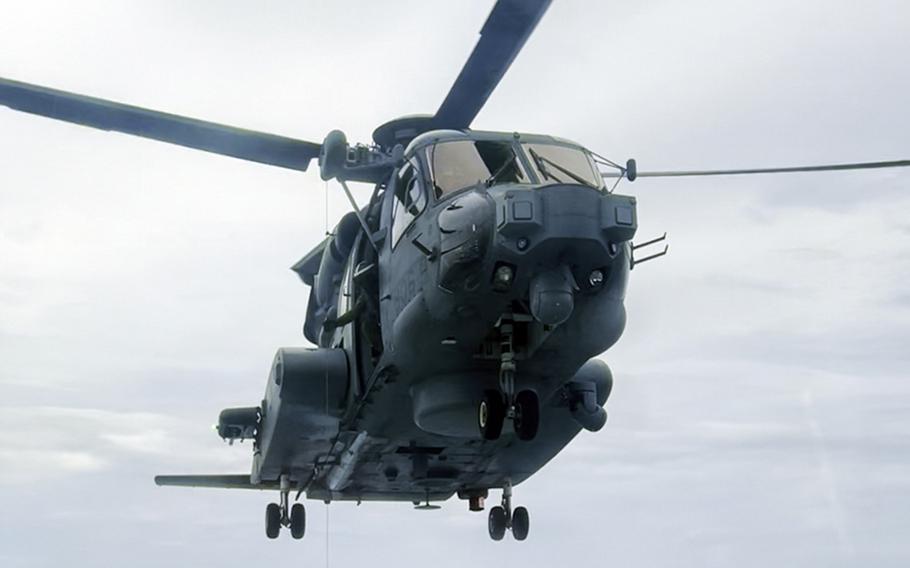
A Canadian CH-148 Cyclone helicopter approaches the guided-missile destroyer USS Ralph Johnson during training in the South China Sea, Sept. 10, 2023. (Jamaal Liddell/U.S. Navy)
Canada’s armed forces have reported a dangerous close call one of its helicopters had with Chinese fighter jets early last week in the South China Sea.
Two twin-engine, air superiority J-11 fighters buzzed a multirole Canadian CH-148 Cyclone during an exercise on Oct. 29, according to a Friday news release from Canada’s Department of National Defence. The Cyclone was operating from the frigate HMCS Ottawa.
“Though the initial encounter was safe, two subsequent encounters were deemed unsafe,” the release said.
One jet eventually made a pass over the Cyclone “with little separation,” prompting the helicopter pilot to take action to fly safely in the jet’s wake turbulence, according to the release.
“Later the same day, during a second sortie, the same helicopter was once again intercepted by another J-11 fighter aircraft, which launched flares directly in front of the helicopter,” the release said. The pilot maneuvered to avoid ingesting the flares into the helicopter’s rotor and intakes.
“This encounter was also deemed unsafe,” the release said.
A spokesman for China’s military disputed the Canadian version of events that he said took place near the Paracel Islands, a disputed island group off the Vietnamese coast.
The Canadian frigate launched two helicopter sorties that approached the Paracels, which China calls the Xisha Islands, “with unknown intentions,” spokesman Senior Col. Zhang Xiaogang was quoted as saying Saturday by the official China Military website.
China “organized naval and air forces to identify and verify in accordance with the law, and repeatedly issued warnings. However, the Canadian helicopter not only refused to respond, but also took provocative actions such as flying at ultra-low altitude. Afterwards, the Canadian side hyped it up through the media to accuse and smear China,” Zhang said, according to China Military.
Zhang “emphasized” that the Chinese military dealt with the situation in a routine, professional manner.
The incident took place in international waters, according to the Canadian Defence Department. The release did not specify the site.
The Ottawa and its aircraft were deployed in support of Canada’s Indo-Pacific Strategy, according to the release.
On Thursday — four days after the run-in with the Chinese fighters — the Ottawa and the guided-missile destroyer USS Rafael Peralta made a trip together through the Taiwan Strait, according to the U.S. 7th Fleet.